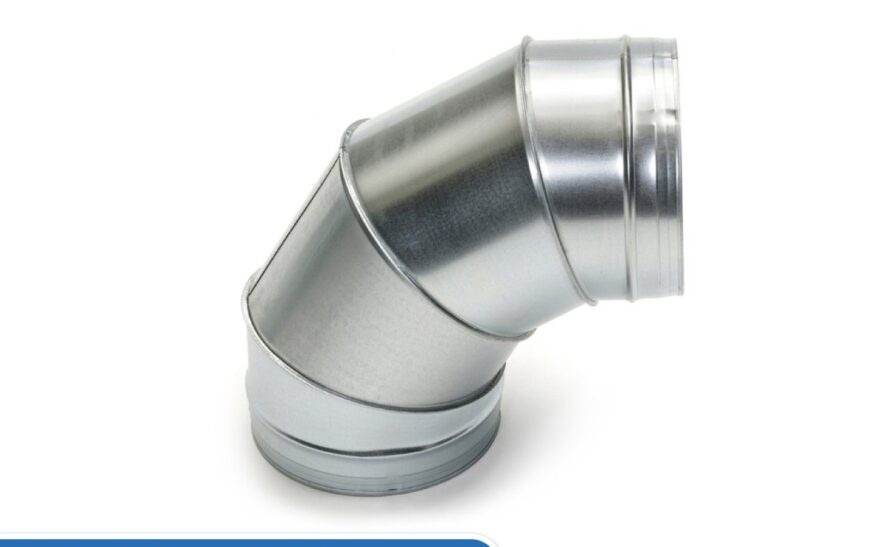Spiral ducting has gained prominence in the HVAC industry due to its numerous advantages over traditional rectangular ducting. This type of ducting is commonly used for ventilation, air conditioning, and heating systems in both commercial and residential buildings. Below are the key benefits of using spiral ducting and a comparison with rectangular ducting.
1. Enhanced Airflow Efficiency:
One of the most significant advantages of spiral ducting is its superior airflow efficiency. The round shape of spiral ducts minimizes air resistance and turbulence, ensuring a smooth flow of air. This is in contrast to rectangular ducts, which often have sharp corners and flat surfaces that create air turbulence and resistance. As a result, spiral ducts can deliver air more efficiently, reducing the load on HVAC systems and lowering energy consumption.
2. Reduced Leakage:
Spiral ducting is known for its excellent sealing capabilities. The continuous spiral seam of the duct provides a tight seal, significantly reducing the likelihood of air leaks. In comparison, rectangular ducts have multiple seams and joints, which are potential points for air leakage. Reduced air leakage in spiral ducts leads to better indoor air quality and improved energy efficiency, as the conditioned air reaches its intended destination without significant loss.
3. Cost-Effective Installation:
The installation of spiral ducting is generally more cost-effective than rectangular ducting. Spiral ducts are lightweight and easier to handle, requiring fewer support structures and less labor during installation. Additionally, their modular design allows for quick and straightforward assembly, reducing installation time and labor costs. Rectangular ducts, on the other hand, are bulkier and more challenging to install, often necessitating more complex support systems and longer installation times.
4. Aesthetic Appeal:
Spiral ducting is often preferred for its aesthetic appeal, especially in exposed ductwork installations commonly seen in modern commercial and industrial spaces. The sleek, round appearance of spiral ducts can complement contemporary architectural designs, creating an industrial yet polished look. Rectangular ducts, with their boxy and utilitarian appearance, are typically concealed within ceilings or walls to avoid detracting from the overall aesthetics of a space.
Also ready our Blogs: https://ductingdelivered.co.uk/blogs/news
5. Space-Saving Design:
The compact and space-efficient design of spiral ducting makes it an ideal choice for installations where space is limited. The round shape allows for more flexible routing through tight spaces and around obstacles. In contrast, rectangular ducts can be cumbersome and challenging to fit into confined areas, often requiring additional modifications or adjustments to accommodate their shape.
6. Noise Reduction:
Spiral ducts are generally quieter in operation compared to rectangular ducts. The smooth interior surface of spiral ducting reduces noise caused by air movement and vibration. In contrast, the flat surfaces and sharp corners of rectangular ducts can amplify noise levels, leading to a noisier HVAC system. The quieter operation of spiral ducts contributes to a more comfortable indoor environment, particularly in residential and office settings.
7. Durability and Longevity:
Spiral ducts are typically made from galvanized steel or aluminum, materials known for their durability and resistance to corrosion. This ensures a longer lifespan and lower maintenance requirements for the ducting system. Rectangular ducts, while also durable, may be more susceptible to damage and corrosion at their seams and joints, necessitating more frequent repairs and maintenance.
Comparison with Rectangular Ducting:
While both spiral and rectangular ducting have their applications, spiral ducting offers several advantages in terms of airflow efficiency, installation ease, aesthetic appeal, and durability. However, rectangular ducting may still be preferred in certain situations, such as when fitting ductwork into narrow or shallow ceiling spaces where a flat profile is necessary. Additionally, rectangular ducts may be more suitable for large, high-volume air distribution systems in commercial or industrial buildings.
In conclusion, the benefits of spiral ducting in HVAC systems are manifold, making it a preferred choice for many modern installations. Its efficiency, cost-effectiveness, aesthetic appeal, and durability make it a superior option compared to traditional rectangular ducting in many scenarios.
Feel free to submit more guest posts through Links Building Servcies - Best Prices. Buy Author Account / 1$ Guest Post Here





















